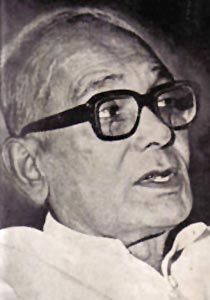 During the 1930s most of the world was in the grip of a severe economic depression The communist party of India grew steadily during this period, despite attempts by the government to suppress it. Finally in 1934 the party was banned. But this did not halt the growth of left-wing ideas both inside and outside the congress.
During the 1930s most of the world was in the grip of a severe economic depression The communist party of India grew steadily during this period, despite attempts by the government to suppress it. Finally in 1934 the party was banned. But this did not halt the growth of left-wing ideas both inside and outside the congress.
By 1934 a significant section of congressmen felt the need of a group within the congress to propound socialist ideas in May of that year. Acharya Narendra Dev, Jayaprakash Narayan, and others formally organized the congress socialist party. Congress socialists became active in Kisan Sabhas and in the trade union movement. Jayaprakash Narayan made this clear in a 1935 party circular that `we should always keep in mind the fact that the congress socialist movement claims to be the vanguard of the independence movement.`
By 1935 the congress socialists accounted for about one third of the congress membership. The calculation was done according to their own estimate. Many congressmen who never formally joined the CSP still supported the socialist ideal. jawaharlal nehru and subhas chandra bose were the most prominent among these.
The strength of the left was made very clear by Nehru election to the president ship of the national body in 1936 and again in 1937. The next year Bose was chosen as president. But his position in regard to the expected war in Europe disturbed Gandhiji who opposed the president attempt at re-election in 1939. Bose defied Gandhiji and won a narrow victory over the respected leader candidate, Pattabhi Sitaramalya. This result, which Gandhiji considered to be his own defeat, came down a crisis in congress. The right wing was opposed to Bose programme and even Nehru did not want a break with Gandhiji. The congress working committee refused to co-operate with the new president and Bose was forced to resign in March 1939. The next month he formed the forward bloc as `an organized and disciplined left wing to fight the Gandhi wing.` Little support could be found within congress for such a programme.



















